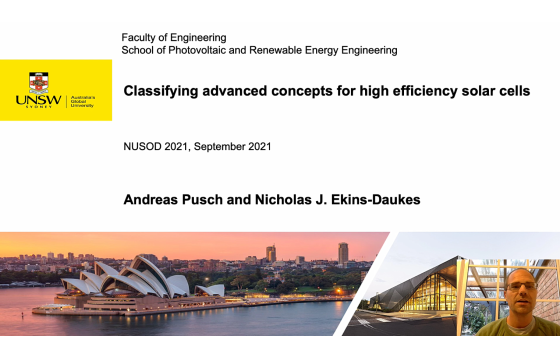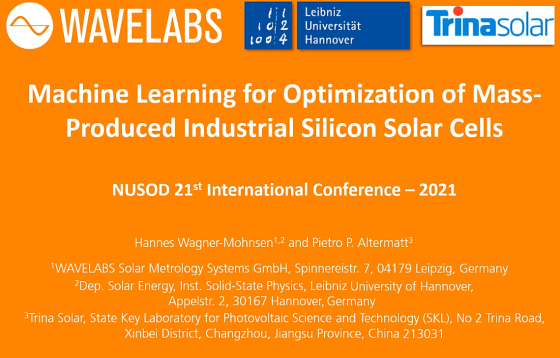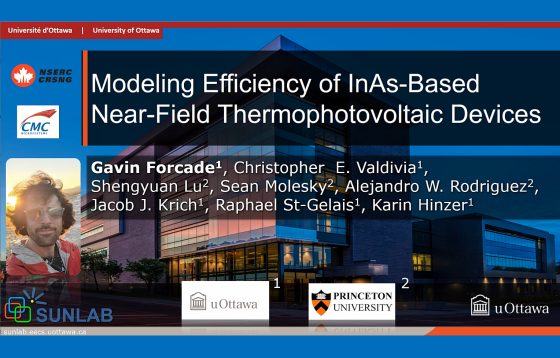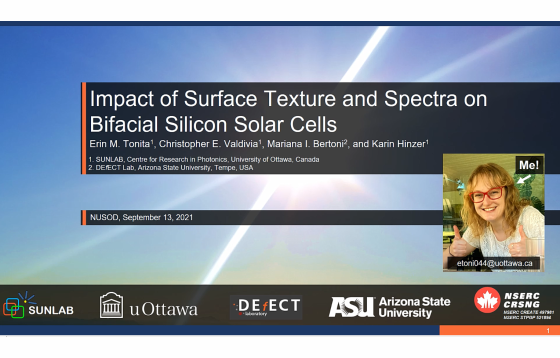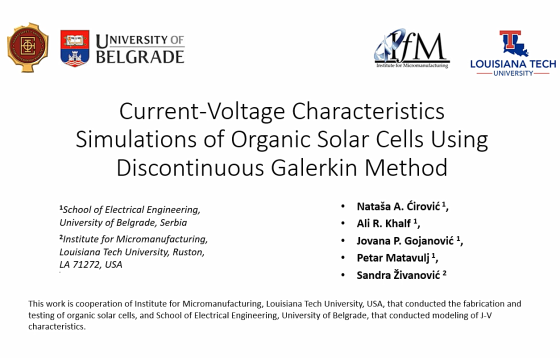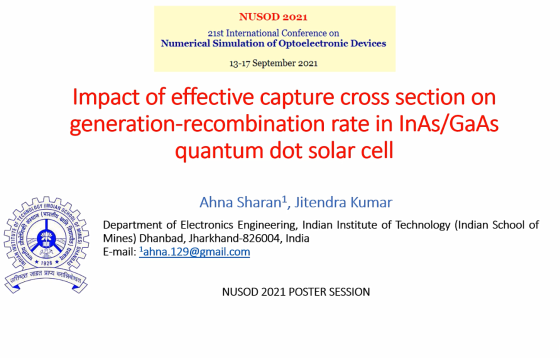


SC02–Machine Learning for Optimization of Mass-Produced Industrial Silicon Solar Cells
We present a methodology where we combine numerical TCAD device modeling, machine learning and advanced statistics for getting a deeper understanding of how process variations influence device performance in mass produced crystalline silicon solar cells. For this, we use seven model input parameters that affect the mainstream solar cell design (PERC) and its performance the […]
SC03–Modeling Efficiency of InAs-Based Near-Field Thermophotovoltaic Devices
Enormous potential lies in waste-heat recycling for the world’s industrial sector. Portable solid-state modules are a universal low-maintenance method to recycle this waste-heat. One such technology, near-field thermophotovoltaics (NFTPV), relies on a heat source in extreme proximity (<200 nm) to a photovoltaic cell, which then generates electricity. We developed an optoelectronic model where electron-hole pair […]
SC04–Impact of surface texture on bifacial silicon heterojunction solar cell carrier loss
We investigate the impact of surface texturing on current loss as a function of depth and wavelength in high efficiency bifacial silicon heterojunction solar cells operating at their maximum power output. We couple 3D ray tracing with TMM thin-film boundary conditions for optical simulations and solve Poisson’s drift-diffusion equations to calculate carrier recombination under both […]
SC05–Current-Voltage Characteristics Simulations of Organic Solar Cells Using Discontinuous Galerkin Method
The steady state drift-diffusion model (DDM) of organic solar cells that considers the surface recombination processes for majority and minority carriers, as well as their thermionic emission on both electrodes, is presented in this paper. When the full Robin boundary conditions (BCs) and the popular finite difference method with Schaffeter-Gummel discretization (FDSG) were applied, significant […]
SC07–Impact of effective capture cross section on generation-recombination rate in InAs/GaAs quantum dot solar cell
Quantum dot solar cell structures have been theoretically analysed to study the impact of effective capture cross sections on quantum dot generation-recombination processes. The Poisson’s and continuity equation were solved self-consistently to obtain electrostatic potential, electron and hole carrier distribution, and electron filling of the QDs. The occupation probability of the QDs was used to […]

